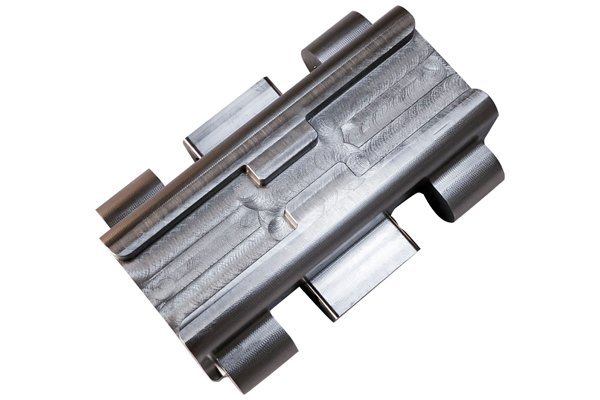Imagine you’re a chef in a bustling kitchen, with pots and pans boiling and sizzling all around. Each ingredient must be carefully monitored, not just for flavor but for the exact temperature needed to create culinary magic. Now, replace your kitchen with an industrial operation, where precise control over materials is every bit as critical—except instead of soufflés, we’re talking about metals, specifically aluminum. And within that metal, lies a crucial factor influencing everything from manufacturing processes to product longevity: the aluminum melting point.
In this article, we’ll dive deep into the intricacies of aluminum melting point variations, exploring their impact on temperature control systems. You might wonder why this is essential knowledge. Well, understanding the melting point isn’t just for the nerdy metallurgist in the lab; it affects countless industries and products we use every day. So buckle up, because you’re about to embark on a journey through the molten world of aluminum!
Understanding Aluminum and Its Melting Point
First things first. What exactly is aluminum? This remarkable, lightweight metal has become a cornerstone in various industries, thanks to its excellent corrosion resistance and high strength-to-weight ratio. You’ve probably encountered aluminum in cans, airplane parts, and even automobiles.
But what’s the deal with its melting point? Aluminum has a melting point of about 660 degrees Celsius (1,220 degrees Fahrenheit). This means when it hits that temperature, it transitions from a solid to a molten state. However, it’s essential to note that various factors can affect this melting point, such as alloying elements, impurities, and even the method of heating.
Why Does the Melting Point Matter?
Ask any experienced machinist or engineer, and they’ll tell you that the properties of aluminum—like its melting point—play a crucial role in temperature control systems. The melting point directly influences how aluminum is processed and shaped. For instance, if the temperature isn’t regulated properly, you might end up with a batch of melted aluminum that’s more like a pancake than a perfectly cast part. Nobody wants that!
Imagine trying to bake a cake. If your oven is too hot, the outside might burn before the inside cooks. The same principle applies to aluminum processing. Incorrect temperature regulation can cause defects that cost time and money.
Key Factors Influencing the Aluminum Melting Point
Think of aluminum alloys as a smoothie; you can throw in various fruits (alloying elements) to change the taste (properties) of the final product. When mixed with elements like copper, magnesium, or silicon, the melting point can shift—sometimes notably. For instance, adding copper can lower the melting point significantly, making it easier to shape and mold.
Just as dirt in a pristine swimming pool isn’t welcome, impurities in aluminum aren’t great either. Contaminants can affect how aluminum behaves when heated, including changes to the melting point. If the aluminum you’re working with has a high level of impurity, it might melt at a lower temperature than expected, leading to potential quality issues.
How you heat aluminum can also play a role in its melting behavior. Think of it as the difference between grilling a steak and using a sous-vide method. The sous-vide method cooks the steak evenly, while grilling promotes hot spots that can burn it. The same principle applies to aluminum; uneven heating can result in inconsistent melting, impacting the entire manufacturing process.
Temperature Control Systems Explained
So now that we’ve got a handle on aluminum melting points, let’s shift gears to temperature control systems.
What Are Temperature Control Systems?
A temperature control system is like an orchestra conductor, ensuring each section plays in harmony. In industrial applications, these systems regulate the temperature during manufacturing processes, especially when metals like aluminum are involved. Common types of these systems include:
How Temperature Control Systems Work
Think of a temperature control system as a smart thermostat in your home, always working behind the scenes. It senses the current temperature and compares it to the setpoint—the desired temperature. If the heat is below the setpoint, it turns on the heater. If it’s too hot, it either shuts off the heater or activates a cooling system.
Similarly, in metal processing, precise temperature control is essential. Here’s how it all ties back to aluminum melting points:

The Interplay of Aluminum Melting Points and Temperature Control Systems
It’s time to bring everything full circle. How do aluminum melting point variations interact with temperature control systems?
Predicting Outcomes with Data
Imagine you’re working on a custom aluminum part for an aircraft. You know that certain alloys will behave differently under varying temperatures. With a solid temperature control system in place, you can gather and analyze data to make predictions about how the aluminum will react during the manufacturing process.
Customizing Procedures
Every component is unique, much like each person you meet. Because of this, having an adaptable temperature control system allows manufacturers to customize procedures according to the aluminum grade being used. It’s the difference between following a strict recipe versus knowing how to cook by feel—both have their merits, but one offers flexibility!
Mitigating Failures
No one wants to hear the dreaded “do-over” in manufacturing. A robust temperature control system allows for quick adjustments, meaning that if systems start to stray from ideal temperatures, corrective actions can be taken before any catastrophic failures occur. Think of it as having a guardian angel watching over your cooking!
Real-Life Applications of Temperature Control Systems in Aluminum Processing
Let’s explore some real-world applications of temperature control systems that utilize aluminum’s melting point.
Aerospace Industry
In aerospace manufacturing, precision is non-negotiable. Airlines and manufacturers employ strict temperature control systems when working with aluminum, especially alloys with lower melting points. A failure in temperature control here could lead to serious safety implications.
Automotive Sector
In the automotive industry, aluminum is favored for its lightweight properties. Temperature control systems are used to ensure consistent melting and shaping processes, helping meet strict vehicle performance standards. Just think about how crucial it is that your vehicle operates safely and efficiently!
HVAC Systems
Believe it or not, temperature control systems are also critical in HVAC components that often involve aluminum. Ensuring the right temperatures during manufacturing guarantees that the units operate optimally, much like a well-tuned engine.
Conclusion: Embracing the Art and Science of Aluminum Melting Points and Temperature Control
We’ve taken a wild ride through the world of aluminum melting points, temperature control systems, and their intersection. It’s clear that understanding aluminum’s melting behavior should be a priority if you work in any industry that utilizes this lightweight metal.
As we’ve explored, variations in aluminum melting points can significantly impact temperature control systems. From predicting outcomes with data, customizing procedures efficiently, to mitigating failures, the right technology can make all the difference in producing high-quality aluminum products.
So, the next time you pop open a can of soda or hop on a flight, take a moment to appreciate the behind-the-scenes magic that keeps aluminum—one of the most versatile materials—working its wonders in our everyday lives. Who knew that the humble melting point could have such far-reaching effects?
Armed with this knowledge, you’ll be able to better appreciate the complex interplay of chemistry and engineering in the fabulous world of aluminum. Cheers to that, and here’s to exploring the molten paths that lie ahead!






